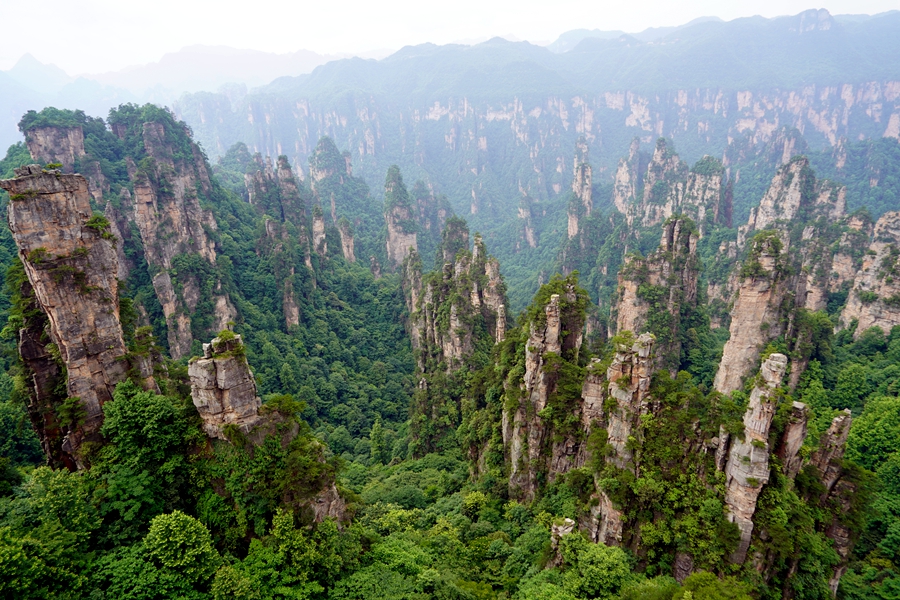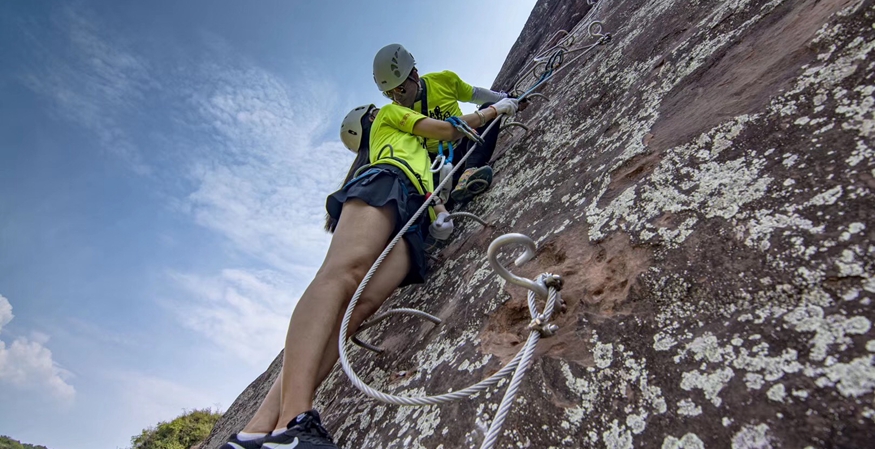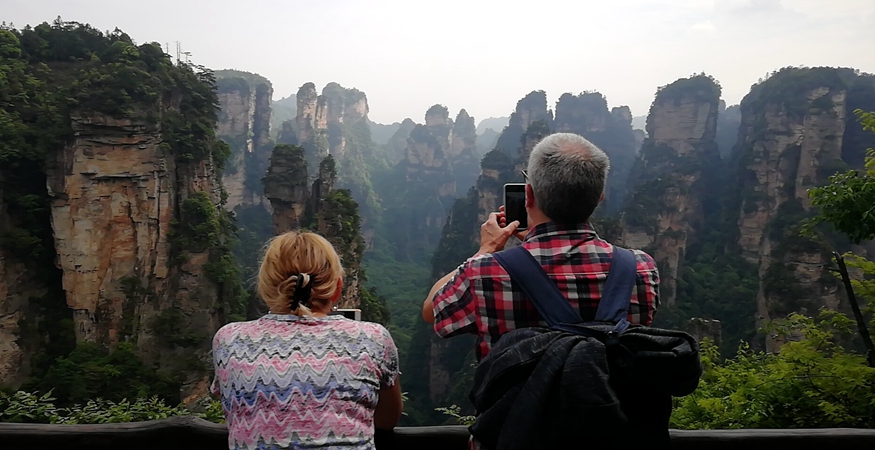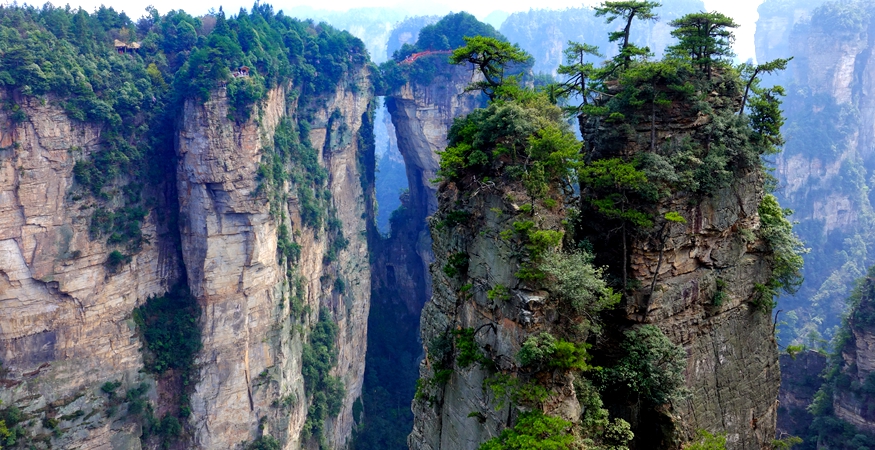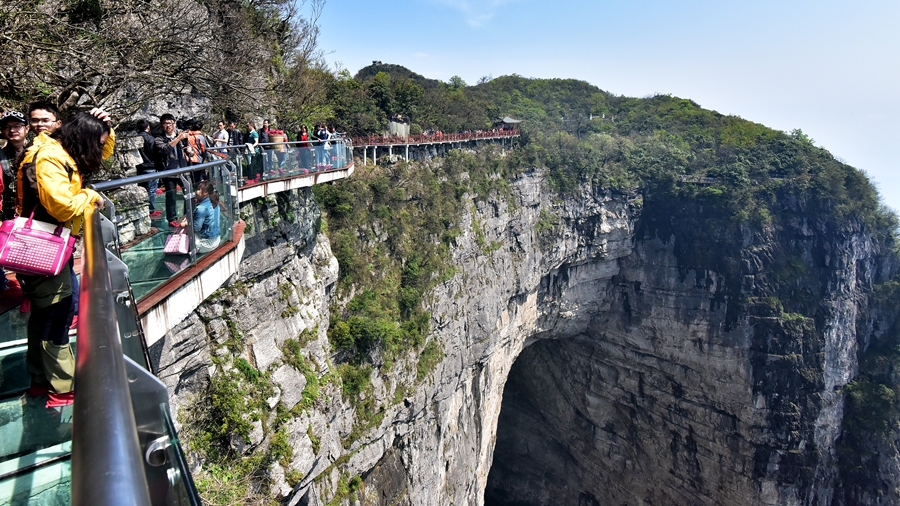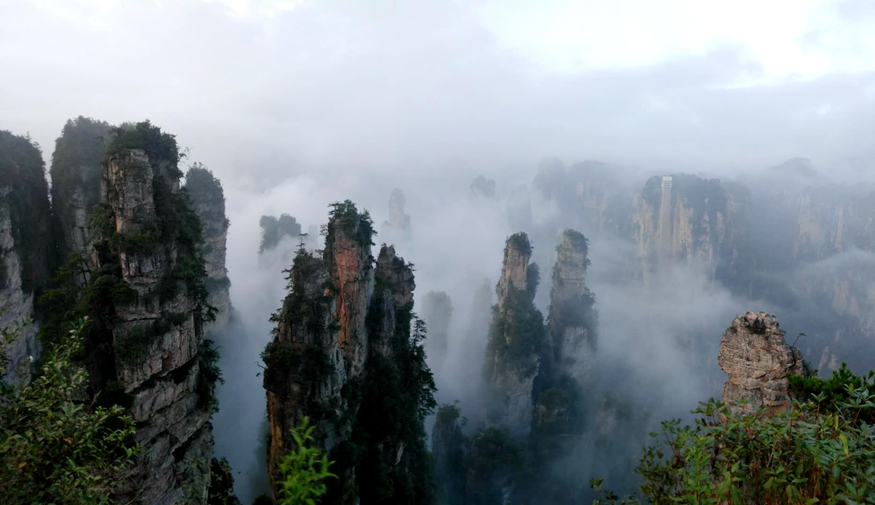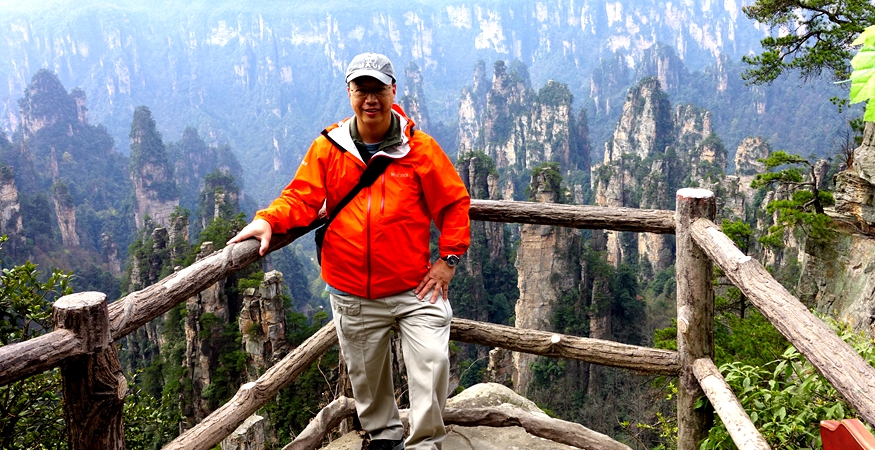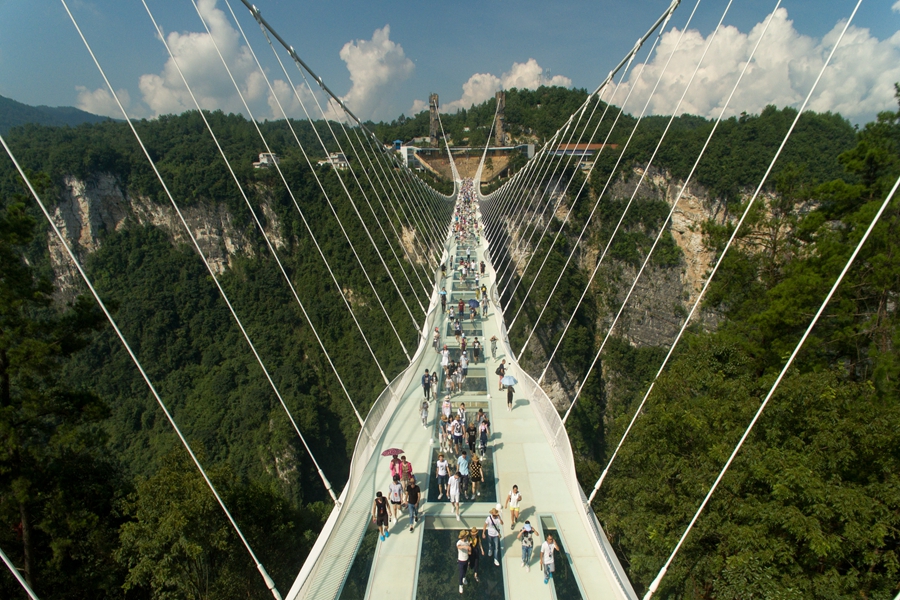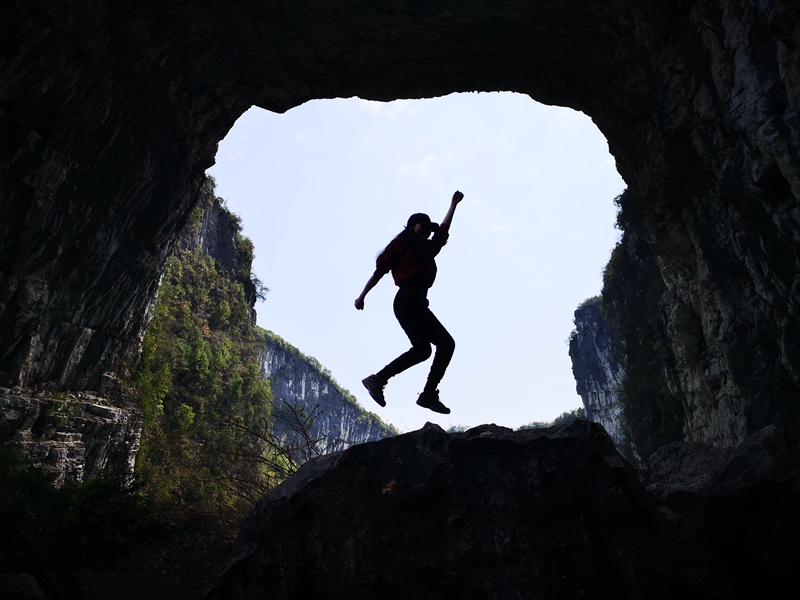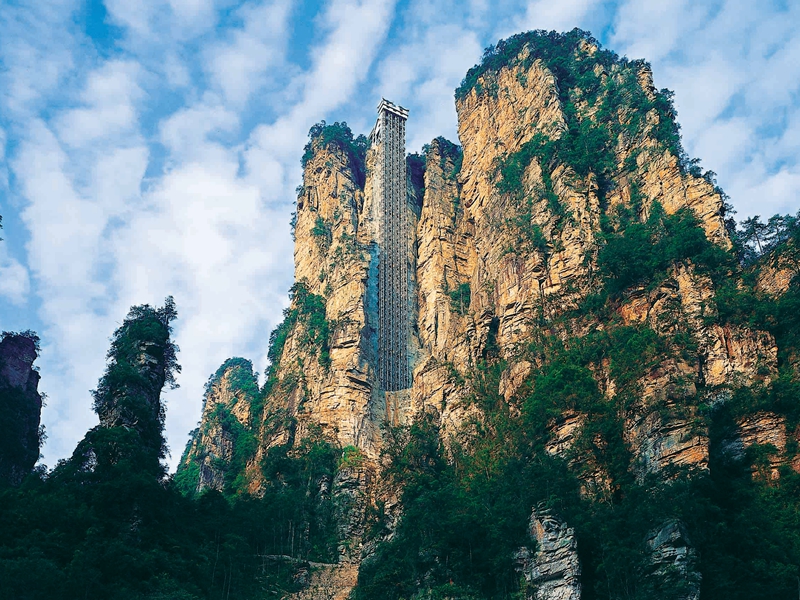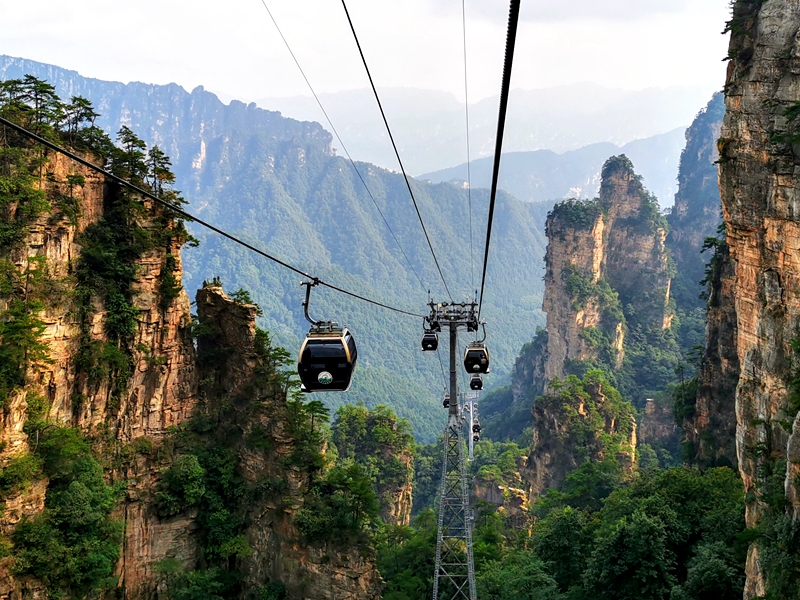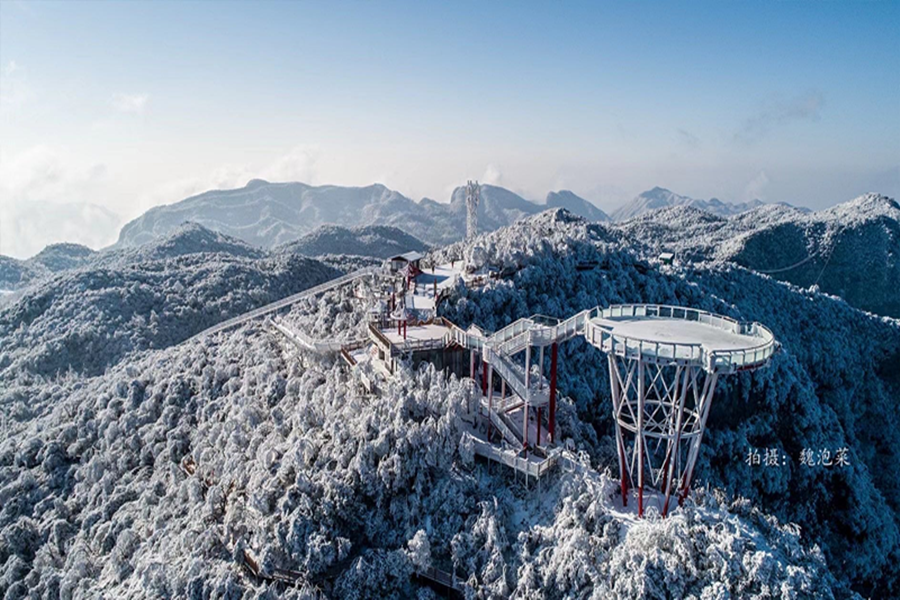
Yueyang Tower
The Yueyang Tower,Having a reputation equal to that of the Yellow Crane Tower in Wuhan and King teng’s tower in Nanchang, the Yueyang Tower is known as one of”the 3 famous towers south of the Yangtse River”. It stands on the western gateway to Yueyang City, commanding a fine view of the city proper and the vast Dongting Lake. It dates back to the Three Kingdoms Period(220-280), when Yueyang was a place of strategic importance which the kingdoms of Wei, Shu and Wu contended for. Lu Su, a general of Wo was assigned to train a naval force in the Dongting Lake. He ordered the construction of a solid walll to fortify the town and a tower by the lake where he could watch the large warships drilling on the expanse of water. Thus the Inspection Tower came into being.
In 716, Zhang Yue, a high ranking official banished to Yueyang, had it extended into the Southern Tower. Then in 1004, when Teng Zijing was in exile here, he had the tower rebuilt and invited FanZhongyan(989-1052), a bosom friend of his, to write a prologue. Inspired by the enchanting landscape and teng’s achievements, Fan, a preeminent literary man in Song dynasty(960-1279),felt an upsurge of emotion and put it into his The Yueyang Tower, which turned out to be a monumental masterpiece that not only has great literary value but also expresses the lofty ideals of men of letters in ancient China. Especially, fan’s saying “foresee before the world does, and delight after the world does”has become known to all the literate Chinese.
Hence, the Yueyang Tower rose to fame; and even now people always associate it with fan’s motto The tower was rebuilt in 1880, showing a structure quite similar to the present one. Between March 1983 and April 1984, it was thoroughly renovated in the former style. In Jan. 1988, it was assessed as a key historic building under state protection. The present tower, a purely wooden structure,rises 21.35 m high from the marble terrace. Amazingly, it is supported mainly by 4 nan-mu columns, each 1. 43 m in circumference. 12 minor pillars are set on the tie-beams that are placed midway across the major columns in the depth-wise direction. The big compartment between the pillars forms the inner part of the second floor, while 20 other pillars support the 4 up-turned eaves, making a circling veranda fenced by balustrades and partitioned from the inner hall with latticed windows On the 3rd floor, corbels and brackets are used to set the eaves out from the roof in an over-hang so that more sunlight is obtained and more beauty is added to the whole structure.
Remarkably, the roof, with 4 cursive hips and a tiny decorative dagoba in the center, is shaped like an ancient military helmet. This style is rarely seen in Chinese architecture. Besides, the trieaved roof is covered with golden glazed tiles, making the tower more splendid The whole structure, delicate in design and exquisite in decoration, is indeed a representative work of ancient architecture. No doubt, it is a perfect combination of aestheticism, mechanics technology as well as architecture. By the way, no iron nail is used in the whole structure To commemorate Fan Zhongyan, people had his”The Yueyang Tower inscribed on woo plaques in 1867 in the handwriting ofMr.Zhang Zhao, a well-known calligrapher of the Qing dynasty(1616-1911). It is now installed in the middle of the second floor as the soul of the tower. Besides, the tower houses many other tablets inscribed with poems of various dynasties in praise of the fantastic landscape, including those of Li Bai(701-762), Du Fu(712-770), HanYu(768-842), Bai Juyi (772–846), Li Shangyin(812?858), Liu Yuxi (772-842)Meng Haoran(689-740), Ouyang Xiu(1007-1072) and Lu You(1125–1210), to name only a few.
The Annexes
The Fairy Plum Pavilion, standing on the left of the tower, is a hexagonal pavilion with a double-eaved roof. A story says that, in 1639. when people were renovating the Tower, they unearthed from the foundation a smooth white marble plaque with the natural patterns of 24 plum calyxes that they regarded the stone as a relic left by an immortal, and built a pavilion to shelter t. The present structure was built in 1979 and renovated in 1983. Another foil to the tower is the Thrice Drunk Pavilion, which stands on the right. It alludes to Li Dongbing, a legendary immortal in Taoism. As a story goes, when Li got drunk here, he used to scribble poems in praise of the charming scenery.
Built in memory of Lu the Immortal in 1983 pavilion is actually an exquisitely decorated two-storeyed tower supported by red pillars and covered with a hipped and gabled roof of double eaves. On the first floor is hung a screen portraying Li as a reclining drunken poet, and the second floor enshrines the image of Lu as a Taoist in The sitting position. The Pavilion in Memory of Du Fu, a third foil, stands on the lakeside, Just a few steps down from the Tower. It was built in 1962 to celebrate the 1250th birthday of Du Fu, a great poet of the Tang dynasty(618-907). In 768, the poor poet wandered here with his family by boat.When he ascended the Tower. all sorts of feelings welled up in his heart. He wrote on the spot a poem entitled”Climbing the Yueyang Tower”, which reads:
Long have I heard of Lake Dongting,Now I ascend the Yueyang Tower, Waters divide Wu from Chu to east or south,The Land seems floating upon their surface,Not a word form family or friends, Old and stick, i stay on a lonely boat, the war ranges on in the north, Leaning, i cannot control my tears.
The poem shows du’s miserable conditions and great admiration for the unusal scenery. Mao zedong liked this poem very much and once copied it in cursive hand. In 700, dufu passed away on his way back to yueyang; yet the poor family couldn’t take the coffin back to his hometown in henan province until 43 later.The yueyang tower scenic area, extended and renovated in 2007, covers an area of 330,00. It has the three kingdowns period( 220-280) as the theme, and includes such newly built spots as south gate, stela vernada, memorial to two gentlemen, memorial to lu the immortal, and the old city wall. With such a big collection of historic sites, the scenic area can take us over 1000 years back.
